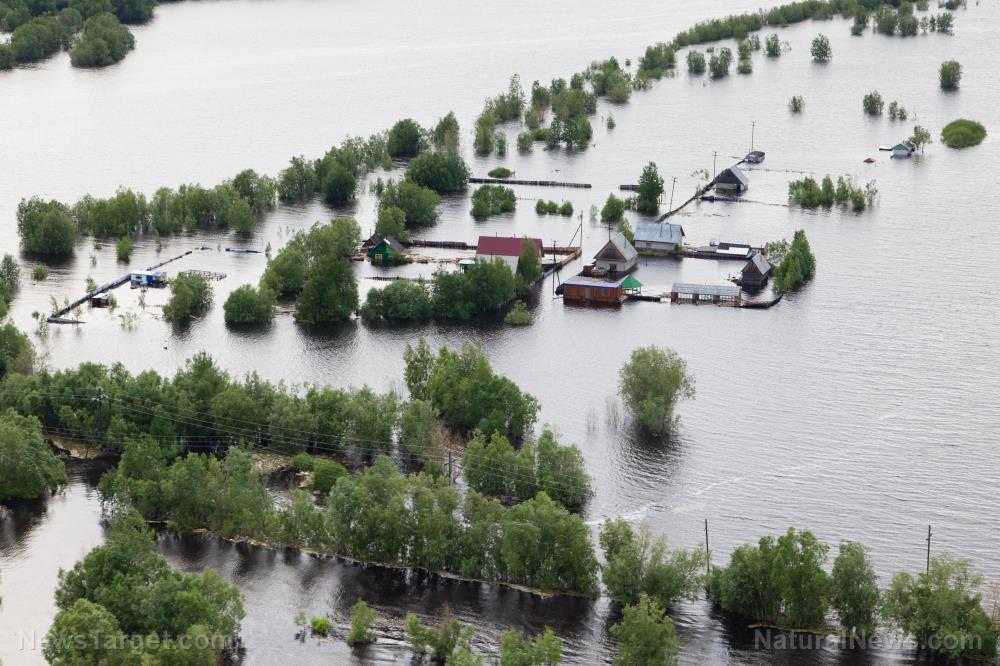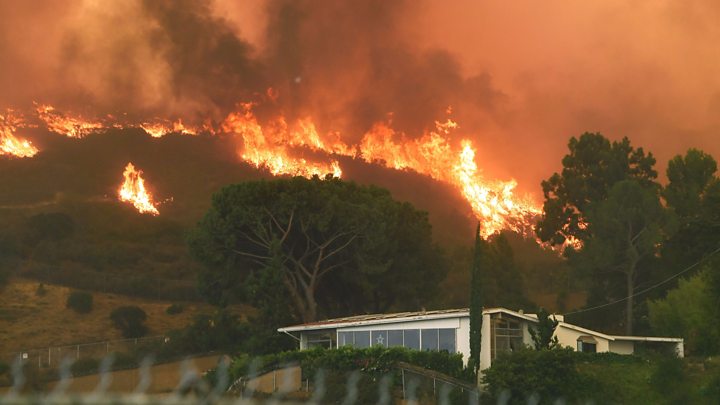China’s Sichuan, Gansu provinces flooded as heavy rain continues to consume Three Gorges Dam
08/20/2020 / By Ramon Tomey

Consistently heavy rainfall over the Yangtze and its tributaries has left many areas – including Sichuan Province, Gansu Province and Chongqing — submerged in water.
Intense rainstorms have caused water levels to rise at the Three Gorges Dam located at the upper reaches of the Yangtze, which prompted China’s Ministry of Water Resources to issue a warning about the increased water levels on Aug. 18.
The ministry said that water levels in the dam reached more than 74,000 cubic meters per second in the morning of Aug. 20 – the highest level since the dam’s commissioning in 2003 – Chinese state-run media Xinhua News Agency reported.
In a statement released early August by The Heritage Foundation, a U.S.-based think tank, excessive flooding put dams upstream of Three Gorges under increasing stress. They added that should the dam collapse, the resulting deluge would affect millions of people living downstream, inundate major cities (including Wuhan where the outbreak of COVID-19 began) and wipe out extensive cropland. The latter could possibly worsen the food shortage China is facing. (Related: China buying up American corn due to flooding, creating food shortage crisis.)
Authorities rush to respond to the flooding
China has been grappling with heavy rainstorms since June, with floods affecting at least 54.8 million people in 27 provinces and regions as per the latest data from the Ministry of Emergency Management. Some Chinese netizens doubt the data released by the ministry however, believing that the number of casualties is actually higher than indicated.
In a report by Xinhua, the authorities in Sichuan raised the flood control response to level one — the highest level of China’s four-tier flood response system — on Aug. 18. This came a day after the level was raised from three to two, according to the same report. More than 100,000 people, some of the residents of Ya’an city, were evacuated on the same day after the city’s water banks burst due to flooding the previous day.
Chinese state-run media also reported that the 71-meter-tall Leshan Giant Buddha statue, which UNESCO declared a World Natural and Cultural Heritage site, had floodwater covering its toes.
According to authorities, Chongqing has been under level one flood control since the afternoon of Aug. 18 with more than 100,000 people in the megacity’s 31 districts and counties were severely affected by floodwaters and mudslides.
Flooding also impacted the city of Longnan in Gansu province. According to a report by Chinese state-run media, a mudslide in Wen county south — of Longnan — buried more than 300 homes that belonged to about 1,300 residents.
Chinese president Xi Jinping visited affected residents in the eastern Chinese province of Anhui — the first time since the year’s flooding season. Regions close to the province’s Huai River, located in between the southern Yangtze River and the northern Yellow River, were part of Xi’s itinerary.
Meanwhile, Xinhua also reported that Typhoon Higos made landfall in the southern Chinese province of Guangdong at around 6 a.m. local time on Aug. 19, with the nearby provinces of Hainan and Guangxi to experiencing heavy rain. The Zhuhai city educational bureau ordered the suspension of any school classes on that date, while many flights to and from Guangzhou Baiyuan International Airport were canceled in response to the typhoon.
Local residents share their stories
Mr. Li, a resident in Sichuan’s Jintang county, said that the flooding in his area wasn’t exactly the result of heavy rains, but rather — the overflow of water from the Yangtze towards the Tuo River near Jintang. He also added that his area first saw flooding on Aug. 15 with the water only starting to subside after two days.
Hailing from the capital of Sichuan, Chengdu resident Mr. Xu said that floodwaters about 1.2 meters high submerged his first-floor home. He estimated his financial losses to the flooding at around 20,000 to 30,000 yuan (about $2,890 to $4,340) — which included much of his furniture and appliances, plus a number of animals he was raising. Xu added that power was cut on the afternoon of Aug. 16 when the water level began to rise, with electricity being restored the next day. However, the water service was cut at around 6 p.m. local time on Aug. 17.
Residents in Gansu province’s Wen county were unable to return home because of the flood. A resident from Bikou town shared that the area was completely submerged in water two storeys deep by the evening of Aug. 18. Another Bikou resident, a farm owner, said that mudslides forced a local highway to be shut down and that local public transportation was also cut short.
We will keep you updated with the latest news on the flooding in China and how this affects the Three Gorges Dam. More news about the natural disasters China is facing can be found at Collapse.news.
Sources include:
Tagged Under: China, Collapse, disaster, Flooding, infrastructure, mudslide, natural disasters, SHTF, Three Gorges Dam, Yangtze River
RECENT NEWS & ARTICLES
COPYRIGHT © 2017 DISASTER NEWS



















